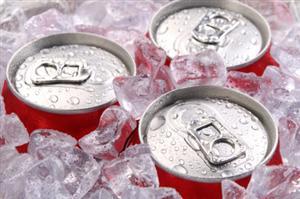| Complexity level: | 4 |
| Project cost ($): | 20 |
| Time required: | 1 hour for preparation, 5 days for observation |
| Material availability: | Easily found. The meat may be purchased from any supermarket. |
| Safety concerns: | None |
Hypothesis
Immersing the steak, chicken breast and salmon in Coca Cola over an extended period will not dissolve the meat.
Overview
Coca Cola
Coca Cola is a popular carbonated beverage that is sold in more than 200 countries. Also known as Coke, it can be purchased from vending machines, department stores and restaurants all over the world. It is normally packed and sold in bottles, cans and PET bottles. Several newer versions of Coke, like Diet Coke and Vanilla Coke, are also being sold worldwide.
The main ingredients used to produce the Coca Cola drink are carbonated water, sugar, caffeine, phosphoric acid and some natural flavorings. The presence of phosphoric acid in Coca Cola makes the drink very acidic. It has a pH level of about 2.7. At this level of acidity, Coca Cola can dissolve the calcium in tooth enamel, chalk and limestone.
There are myths and rumors that the Coca Cola drink can actually dissolve a T-Steak in 2 days. However, this is very unlikely because the pH of our stomach is between 1.5 and 3.5. This is because of the presence of hydrochloric acid in our stomach. Despite having a pH lower than Coca Cola, our stomach still needs enzymes like pepsin to break down the food in our stomach for digestion.
Scientific Terms
Materials
The materials required for the science fair project:
- 300g of fresh steak
- 300g of fresh chicken breast
- 300g of fresh salmon steak
- 3 large bowls
- 6 bottles of Coca Cola
Procedure
1. For this science fair project, the independent variable is the type of meat used - steak, chicken breast and salmon. The dependent variable is if the meat immersed in the Coca Cola beverage will dissolve. This is determined by checking and observing the bowls containing the meat every day. The constants (control variables) are the size of the bowls, the amount of Coca Cola poured into each bowl, the temperature of the environment (which will remain at room temperature) and the length of the experiment.
2. Clean the 3 bowls and place a piece of steak, chicken breast or salmon inside each of the bowls. Pour two bottles of Coca Cola into each of the bowls. The meat in the bowl must be fully immersed in Coca Cola.
3. Inspect the meat in each bowl every day to check if the Coca Cola has succeeded in fully dissolving the meat. Record your observations once a day over the next 5 days.
Results
It is observed that the Coca Cola did not dissolve the steak, chicken breast and salmon that were immersed in the beverage for 5 days.
| Meat | Testing the ability of Coca Cola to dissolve meats | |||||
| Start | Day 1 | Day 2 | Day 3 | Day 4 | Day 5 | |
| Steak | X | X | X | X | X | X |
| Chicken breast | X | X | X | X | X | X |
| Salmon | X | X | X | X | X | X |
X - The meat was not dissolved by the Coca Cola, Y - The meat was dissolved by the Coca Cola
Conclusion
The hypothesis that immersing the steak, chicken breast and salmon in a bowl of Coca Cola would not dissolve the meat has been proven to be true.
Soft drinks like Coca Cola are very popular with consumers of all ages. Phosphoric acid is added to the beverage to give it a tangy taste similar to the flavor normally found in ginger and lemons. Even though the level of acidity is enough to erode tooth enamel or copper coins, its pH is still higher than stomach acid and is hence safe to drink.
Also consider
The science fair project can also be repeated to test the effects of soft drinks on other calcium-rich materials, by using pieces of chalk instead of teeth.
The experiment may also be modified to test the effects of fruit juice on tooth enamel, by using natural juices like lemon juice, orange juice or pineapple juice.
References
Coca cola - http://en.wikipedia.org/wiki/Coca-Cola
Is it true that carbonation and acids in soda can dissolve a T-bone steak? - http://www.todaysmodernwoman.com/Non-Alcoholic-Drinks/234090.htm
Is the phosphoric acid in Coca Cola actually dangerous? - http://www.foodaq.com/html/Non-Alcoholic-Drinks/87504.html

